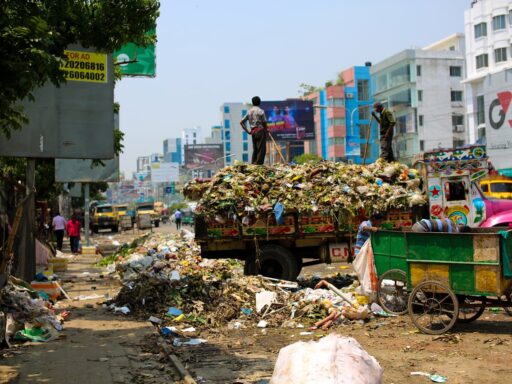- Transparency in Sustainability Claims: Look for Verifiable Information
- Clear Metrics and Measurable Impact: Track Progress Over Time
- Avoiding “Eco” Buzzwords: Be Skeptical of Overused Terminology
- Long-Term Commitment vs. Short-Term Initiatives
- Full Lifecycle Accountability: Consider the Entire Supply Chain
- Third-Party Audits: Independent Verification for Authenticity
As consumers become increasingly aware of environmental issues, businesses are under pressure to demonstrate their commitment to sustainability. However, this rise in eco-consciousness has also led to “greenwashing”—where companies exaggerate or falsely claim environmentally friendly practices to gain consumer trust. In contrast, genuinely sustainable innovations focus on long-term environmental benefits and transparent, measurable impact. Packaging experts, innovators, and eco-conscious consumers must be able to differentiate between superficial claims and authentic sustainability efforts.
This article overviews greenwashing tactics and explains how to identify sustainable innovations with real-world examples.
Transparency in Sustainability Claims: Look for Verifiable Information
One of the clearest indicators of greenwashing is vague or unverified claims about a company’s environmental practices. Genuine sustainability initiatives should be backed by verifiable data and transparency regarding goals, processes, and outcomes. This includes clear communication about products’ lifecycles, their carbon footprints, and how environmental improvements are measured.
Unilever’s Sustainability Transparency
Unilever is a prime example of a company committed to transparency in its sustainability efforts. Through its Sustainable Living Plan, Unilever tracks its progress on goals such as reducing waste, sourcing sustainably, and improving the health of billions. The company publishes detailed reports annually, with measurable data showing how its actions contribute to long-term sustainability.
In contrast, companies that engage in greenwashing tend to use vague language like “eco-friendly” or “natural” without specific evidence to support these claims.
Certifications and Labels: Trust Reputable Third-Party Standards
A reliable way to identify sustainable innovations is to seek certifications from reputable third-party organizations. These certifications independently verify a company’s environmental practices, making it harder for businesses to engage in greenwashing.
FSC Certification in Packaging
The Forest Stewardship Council (FSC) certification ensures that packaging materials come from responsibly managed forests. FSC-certified packaging guarantees that companies use sustainably sourced paper products, reducing deforestation and supporting biodiversity.
Tetra Pak, a leader in sustainable packaging, uses FSC-certified paperboard in its cartons. This certification ensures that the raw materials come from forests that meet high environmental and social standards, providing consumers with confidence that the packaging is truly sustainable.
Clear Metrics and Measurable Impact: Track Progress Over Time
Genuine sustainability is not achieved overnight, and real impact comes from continuous improvement. Look for companies that set measurable sustainability goals and track their progress over time. Metrics such as carbon footprint reduction, energy savings, and waste diversion provide tangible evidence of sustainable innovation.
Patagonia’s Carbon Footprint Reduction
Patagonia is widely recognized for its commitment to sustainability. It provides detailed metrics on how its products and processes reduce environmental impact. The company aims to become carbon-neutral by 2025 and tracks its carbon emissions, water use, and energy efficiency across its supply chain. Patagonia has also pioneered the Worn Wear program, which encourages customers to repair and reuse clothing rather than discard it, further minimizing waste.
Avoiding “Eco” Buzzwords: Be Skeptical of Overused Terminology
Many companies use buzzwords like “natural,” “eco-friendly,” or “green” in their marketing without backing these terms with meaningful action. These claims often lack specificity and can be misleading. Consumers and businesses should approach such terminology with skepticism unless detailed information supports the allegations.
H&M’s Greenwashing Allegations
H&M has faced criticism for using terms like “Conscious” in its clothing lines without fully disclosing how sustainable these products are. While H&M has made strides in some areas of sustainability, such as recycling textiles, critics argue that the company’s fast-fashion business model inherently contradicts long-term sustainability goals. In 2021, H&M was even sued for misleading sustainability claims in its marketing.
This serves as a reminder to look beyond buzzwords and investigate whether companies are making systemic changes to their practices rather than merely marketing sustainability.
Long-Term Commitment vs. Short-Term Initiatives
Genuinely sustainable companies integrate environmental responsibility into the core of their business model, making it a long-term commitment rather than a short-term marketing campaign. Look for companies that have set ambitious sustainability goals for the future rather than promoting one-off eco-friendly products or initiatives.
IKEA’s Long-Term Sustainability Goals
IKEA is committed to becoming climate-positive by 2030, meaning it will reduce more greenhouse gas emissions than it produces. The company’s strategy includes sourcing 100% renewable energy for its operations, using sustainably sourced materials, and designing products for reuse, recycling, or biodegradability. IKEA has also introduced several circular economy initiatives, including buy-back programs for old furniture, demonstrating a commitment to sustainability beyond short-term gains.
Full Lifecycle Accountability: Consider the Entire Supply Chain
True sustainability addresses the entire lifecycle of a product—from raw material sourcing to end-of-life disposal. Companies engaging in greenwashing often focus only on the sustainable aspects of their products while ignoring other parts of the supply chain that may be harmful to the environment.
Tesla’s Supply Chain Scrutiny
While Tesla is a leader in promoting electric vehicles (EVs) as a green solution to transportation emissions, the company has faced criticism for the environmental and social impacts of sourcing materials for its batteries, such as lithium and cobalt. This has led to increased scrutiny of Tesla’s supply chain, highlighting the importance of considering the entire lifecycle when evaluating sustainability claims.
Tesla is now taking steps to address these concerns by sourcing more ethical materials and exploring battery recycling programs, but this example underscores the complexity of genuine sustainability.
Third-Party Audits: Independent Verification for Authenticity
Independent audits are an effective way to verify that a company’s sustainability claims are genuine. Companies that engage in third-party audits allow external experts to evaluate their environmental performance, ensuring accountability and transparency.
Levi Strauss & Co.’s Sustainability Audits
Levi Strauss & Co. regularly conducts third-party audits to assess its sustainability efforts, particularly in water conservation and sustainable cotton sourcing. Through its Water<Less initiative, Levi’s has reduced water use by up to 96% in producing some products. The company also works with independent auditors to evaluate its supply chain and labor practices, ensuring its sustainability claims are credible.
As businesses and consumers become more focused on sustainability, it is essential to differentiate between genuine impact and greenwashing. Transparency, third-party certifications, measurable impact, and a commitment to long-term sustainability are vital indicators of authentic sustainability efforts. Companies like Unilever, Patagonia, IKEA, and Levi Strauss are setting benchmarks for how businesses can integrate sustainability into their core operations while avoiding the pitfalls of greenwashing.
By focusing on credible metrics and avoiding superficial claims, businesses can build trust with consumers and positively impact the environment. Packaging experts and innovators should adopt these principles to ensure their products and services align with genuine sustainability goals and avoid the trap of greenwashing.






